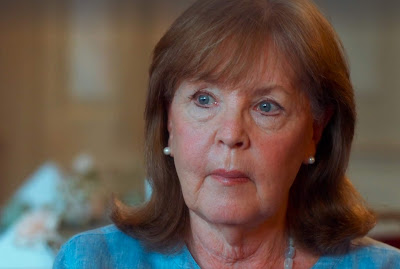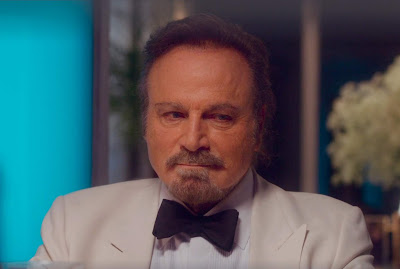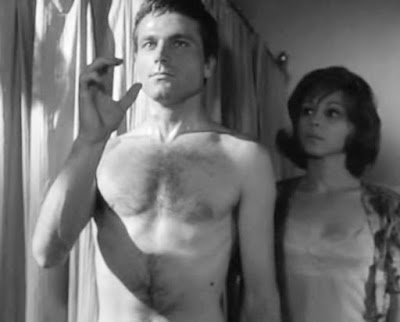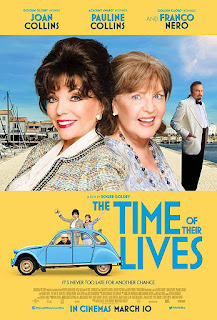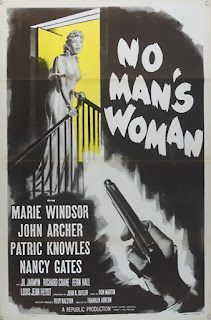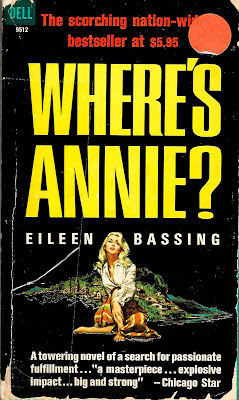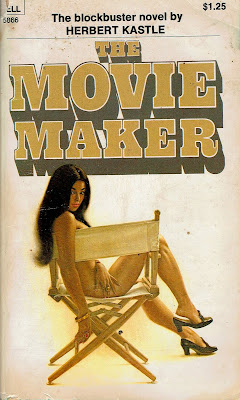I had a dream about
Seka the other night. I was helping her dye her hair — on her head, thank you. We were streaking her platinum locks green and blue. And yes, I
am gay.
The reason a porn queen from the 1970s and ’80s was appearing in my dreams at all, even in a non-sexual context, can be attributable to my new favorite podcast,
The Rialto Report, in which hosts Ashley West and April Hall interview performers and directors of adult films in the 1970s and ’80s in a friendly, non-judgmental way that shows that their subjects are more than the sum of their private parts. If you ever wished
This American Life devoted an episode to the life story of
Pat Barrington or wondered what a
Fresh Air interview with
Georgina Spelvin might sound like, the Rialto Report’s podcast is for you.
But in listening to all these Rialto Report podcasts, I had a renewed interest in watching some classic straight porn. (The Rialto Report has interviewed a few veterans of gay adult film, including
Boys in the Sand director
Wakefield Poole and gay-for-pay icon
Jeff Stryker, but the site largely focuses on straight smut. I imagine part of the reason for this is so few Golden Age gay porn stars
are still alive.) Though I’ve seen a few straight classics like
Deep Throat and
Talk Dirty to Me, the bulk of my hardcore porn consumption has been of the all-male variety. I’ve come to find current porn videos either boring or gross, however, so why not take a break from trying to rub one out to some present day man-on-man action and instead watch some fuck films that actually played in theaters, enjoying them solely on an aesthetic level?
Though I’d been dreaming of Seka, I by-passed one of her titles in favor of the 1975 movie
EVERY INCH A LADY. It starred Harry Reems (the mustache might be off-putting to some, but there's no denying he had a hot body), featured another Rialto Report podcast subject,
Andrea True, but, most importantly, it was streaming for
free.
It was a fortuitous choice, for although
Every Inch a Lady is a straight porn movie, it has a decidedly gay sensibility.
The lady in question is Crystal Laverne (Darby Lloyd Rains, giving a performance worthy of John Waters stock player Mary Vivian Pearce), the co-owner and proprietress of Deviations, Inc., a successful escort service catering to almost all sexual tastes, save scat. Crystal has the mannerisms befitting her name, which is to say she’s a female drag queen. When we meet her, standing in the living room of her penthouse apartment, she’s decked out in a red gown and matching feather boa, supervising the alteration of one of her call boy’s jackets (for which the young hustler has stripped down to his skivvies, as one does), signing real estate contracts and imploring her lesbian assistant Edna (a bewigged Andrea True) to answer the constantly-ringing phone. She’s just so goddamned busy—but not too busy to audition Margie, a blonde bubblehead played by Kim Pope. I thought for sure this would be the obligatory girl-girl scene, but no, Crystal summons the call boy getting his jacket altered, Tony (David Savage), to do the honors. Crystal spies on them through a peephole cut into wall of the neighboring room, occasionally offering Edna a peak (“A very handsome female. I wouldn’t mind being in Tony’s place myself.”) and picking up a microphone to broadcast her pointers to the professional fuckers (“OK, Margie, a little more hip action”).
Crystal even takes time out from supervising her potential new hire’s sexual prowess to draft up some new rules. “Just last night one of our best girls came over here and told me her client had shit on her head—and only gave her $50 extra,” recounts a horrified Crystal. “So, defecation is out!”
“No shit,” says Edna, making a note of the new rule.
 |
Business casual.
|
Once Margie’s audition is out of the way, Crystal slips into something more comfortable: a black lace peignoir and nothing else. Given Crystal’s line of work and the fact that this is a porn movie, one wonders why she bothered with that red gown and boa, though I appreciated the filmmakers’ willingness to keep things covered up for a while, as the tease virtually non-existent in today’s smut. Anyway, with her pussy free to breath, Crystal takes a moment to relax with Edna. Once again, I was anticipating some girl-on-girl action as the set up was so obvious, and once again
Lady subverted my expectations as no muff diving ensues. (Spoiler alert: there’s no girl-on-girl action in this movie.) Rather, Crystal chooses this moment to tell Edna of her humble beginnings, sending us into a flashback that makes up good two-thirds of the movie’s runtime.
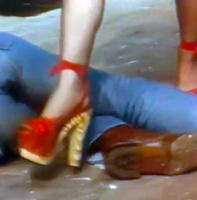 |
| Come-fuck-me platforms. |
Before becoming a successful madam, Crystal was but a lowly streetwalker, struggling to make ends meet but still able to rock an amazing pair of glittery red platform shoes. After another, um, dry day of trawling for tricks, she comes home to her apartment, only to find Chino (Harry Reems) sacked out at her door. She invites him inside, as one does when finding a stranger at her doorstep, and they immediately start getting nasty. But just before Chino finishes Crystal off, he demands $20. “What?” Crystal exclaims. “I was going to get $15 from you!” (That money wasn’t discussed up front gives us insight into why Crystal wasn’t finding success as a streetwalker.) The two laugh off the misunderstanding, choosing money shots over actual money.
We learn via voice over that Chino had been a hustler for five years, making his living “from middle-aged women and homosexuals.” The pair decide to open an escort agency, under the guise of offering massages. I find it quaint that this movie treats the concept of massage services being a cover for prostitution as simply unheard of until these two dimwitted prostitutes brainstormed it during their post-coital chat.
Crystal and Chino quickly become business partners as well as lovers (it’s an open relationship, natch). Their first trick is none other than
Jamie Gillis, who sits on the sidelines masturbating while Crystal and Chino go at it. Gillis does join the couple on the bed, and for a moment it looks like he’s about to mount Chino. But no, there’s no Gillis-on-Reems action. However, Crystal does insert a string of brown anal beads (
Brown? Really?) in Chino’s ass, which Gillis yanks out as Chino comes. Though the beads clearly facilitated a powerful orgasm, Chino —a trade top, evidently — decides to exact revenge by shoving a carrot up Gillis’ butt. By the way, the male butt play appears to be simulated as neither the beads nor the carrot is shown disappearing into the male performers’ assholes.
I Didn’t Know Joan Rivers was in a Porno Movie!
Crystal and Chino’s business quickly grows, necessitating the need for extra staff. Crystal enlists the help of a former cell mate, Lois, to handle an opera buff, played by Mark “10 ½” Stevens, whose dick size is so impressive that its measurement merits a screen credit. This is by far my favorite scene, if only because it exposes the Joan Rivers’ porn past.
 |
Joan Rivers in The Swimmer; not Joan
in Every Inch a Lady. |
OK, Lois is NOT played by Joan Rivers (don’t sue me, Melissa); she’s played by Erica Eaton. But considering Eaton is so similar in appearance, possesses a New Yawk rasp that’s almost identical to Rivers’, combined with the knowledge that
Rivers considered all offers, you could almost believe that it’s the late comic fellating the somnolent Stevens. (And really, Rivers would’ve done less damage to her career in the mid-’70s appearing in a porno than she did writing and directing
Rabbit Test.)
The scene with Eaton and Stevens’ is strictly for laughs, as only a scene featuring a Joan Rivers doppelgänger could be. When Stevens’ fails to respond to Lois’ ministrations, his famed 10 ½ inches never quite reaching seven, he asks her to talk dirty to him. So, Lois reads aloud from a porno novel (“It’s a fucking
beee-yoooo-tiful cock!”) while they fuck to Wagner’s “Flight of the Valkyrie.”
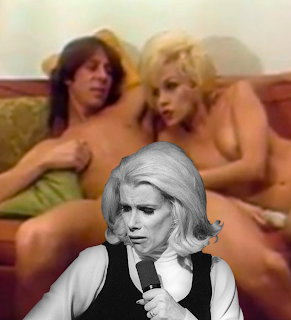 |
Less shameful than writing and
directing Rabbit Test. |
My second favorite scene in this movie features a performer billed as Dr. Infinity, in the part of Joe Blow. Consider that “character” name foreshadowing. Crystal, now operating out of an office, is about to interview Mr. Blow as a new addition to her stable, but she’s interrupted by a phone call. While Crystal chats on the phone with a disgruntled client (“Well, who could’ve foreseen
that? You couldn’t have expected the poor mule to know the old Ferncliff bitch had had a hysterectomy.”), Joe Blow gets impatient. He strips down, hops atop a nearby desk, and demonstrates his special skill: sucking his own dick. He fucks himself with a cucumber as well, but that’s not a special skill, just resourcefulness. Needless to say, he’s hired. Incidentally, Dr. Infinity has a pretty interesting history, including the attempted theft of the
Gutenberg Bible from the Harvard Library in 1969.
This brings us back to the penthouse with Crystal and Edna. Crystal’s trip down memory lane is interrupted by a phone call— Crystal is always getting interrupted by phone calls — reminding her of a meeting with a real estate agent to finalize a house purchase for Chino. No sooner has the harried madam rushed out the door than Edna is removing her Velma wig and her clothes. Chino arrives a minute later. Edna’s not a dyke at all (gasp!) but Chino’s lover, the pair plotting to murder Crystal and take over Deviations, Inc. Unbeknownst to them, Crystal, having forgot some paperwork and returned to the penthouse, overhears them in the bedroom. She sees them as well (Oops! Edna forgot about the peephole), and after hearing the couple’s murder plans (Edna also forgot the room is bugged), decides to use that plan to murder
them. A surprisingly dark turn of events for what has otherwise been a lighthearted porno romp.
Humor in porn movies is usually crass, juvenile and/or stupid, but
Every Inch a Lady is the first straight porn film I’ve seen that can be described a campy. This shouldn’t be a surprise, really; it was directed by gay brothers
John and Lem Amero, who directed sexploitation movies in the 1960s before moving on to hardcore movies for gay and straight audiences in the 1970s and 1980s. Even if the sex was for the pleasure of straight men, the movie, with its hammy acting, outrageous dialog, and thrift store drag fashions, not to mention the autofellatio and male anal stimulation, seems to be giving a wink and a nod to gay men. I’d never masturbate to it, but I dug
Every Inch a Lady and I plan to hunt down other works by the Amero Bros. (their movie
Bacchanale looks trippy). But they’ll have to wait in line. I still owe it to myself to check out one of Seka’s movies. She’s my dream girl, after all.

